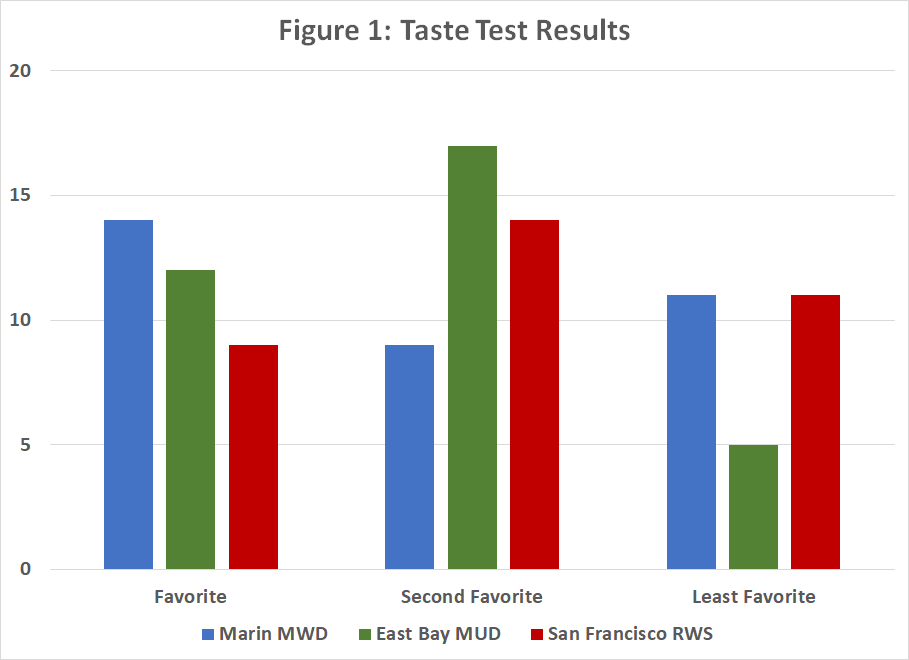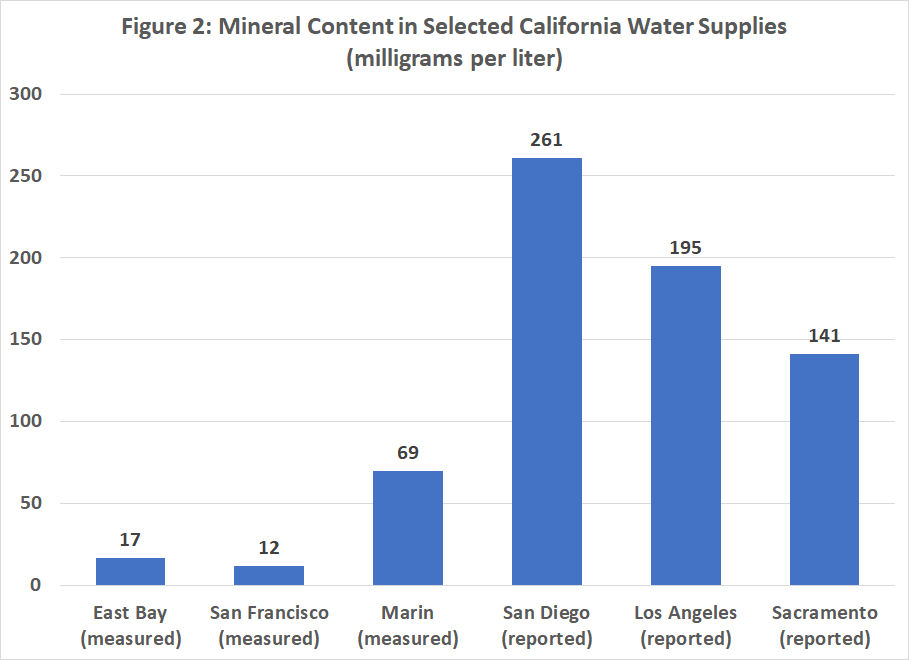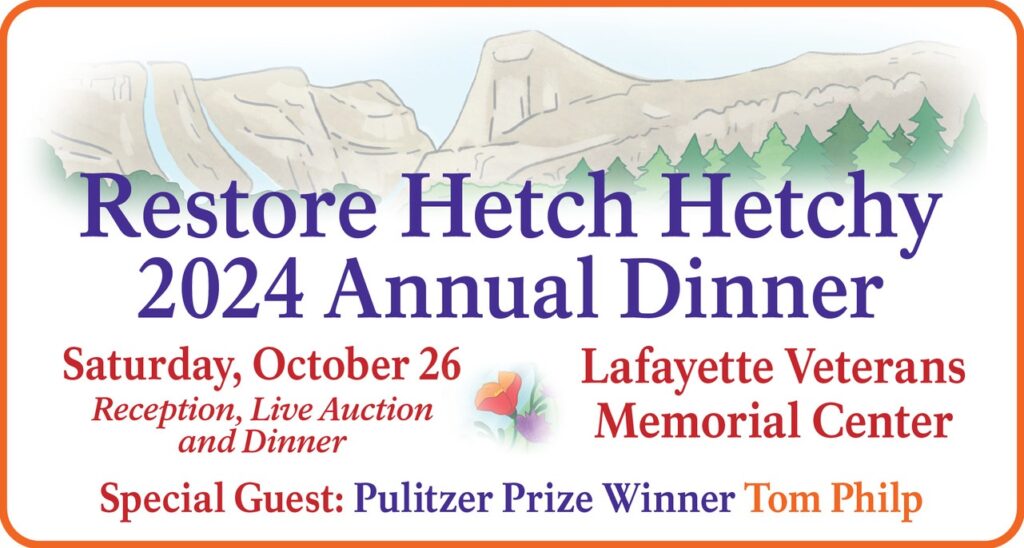Is the quality of San Francisco’s water as good as some claim?
The simple answer is no. Some people cannot distinguish it from other Bay Area supplies, and many who do prefer those other sources.
Ever since damming Hetch Hetchy Valley in Yosemite National Park, San Francisco leaders have been boasting about the quality of their water supply. Restaurants often tout their “Hetch Hetchy” water, conflating one of many storage reservoirs with the source of the water (the Tuolumne River). Some claim that it is the best around or even the best anywhere, and that the quality is essential for making bagels and brewing beer.
Such hyperbolic adulation seems unwarranted.
Debunking San Francisco’s outlandish claims about water quality is important. When the valley is restored, we don’t think consumers will be able to tell the difference if the bulk of their water is diverted from other locations in the Tuolumne River watershed. Further, we believe the overstated water quality claims are a factor in current prohibitions against boating and fishing in the current reservoir.
In early July, we asked 34 people to take part in a “double-blind” taste test to determine how water provided by the San Francisco Public Utilities Commission compares to that provided by the East Bay Municipal Utilities District and the Marin Municipal Water District.
The results were reasonably close, but Marin was the favorite, followed by East Bay MUD with San Francisco receiving the fewest first place votes. See Figure 1.

The taste test was designed by graduate students at Colorado University, who collected survey data in Oakland in June and who will complete a full report that we will then release in the fall. Data for Figure 1 was collected by Restore Hetch Hetchy in July at locations in Marin, Alameda and San Mateo Counties. (A “double-blind” test is one in which neither the subject nor the person administering the experiment knows which sample is which.)
At Restore Hetch Hetchy, we have always been a little skeptical about the quality of San Francisco’s water, so we asked Colorado University for help and also collected some data on our own. The people surveyed were not experts. We wanted to know what regular people think.
How are these water sources different?
Perhaps the most obvious quantitative difference between these supplies is the “hardness” of the water, i.e. the concentration of minerals, principally calcium and magnesium, measured in milligrams per liter.
San Francisco’s water is particularly soft, i.e. it has little mineral content. Some may prefer soft water, while many complain it has little taste. Note that communities which desalinate water typically add small amounts of calcium and magnesium before distributing supplies to customers.
On the other hand, people tend not to like water with a high mineral content – like most water in southern California.
Water supplies provided by East Bay Municipal Utilities District and the Marin Municipal Water District have relatively low mineral content, but higher than San Francisco. See Figure 2 for a comparison of the mineral content of selected urban water supplies in California.

It is also important to point out that most water utilities deliver a blend of supplies. The precise blend a utility delivers at any given time depends on a number of factors, including time of year, drought year vs. normal year, and maintenance schedules.
The samples for the taste test described above were collected from homes in Marin, Alameda and San Mateo (90% SF water) Counties – all with modern piping systems and after running water for five minutes. Below is more information about the sources of the various water supplies in the taste test:
- San Francisco – 85% of San Francisco’s water comes from the Tuolumne River in the Sierra Nevada. Most of this water is delivered (treated with chlorine etc. but unfiltered) directly to customers, but some is stored in Bay Area reservoirs. Water stored in Bay Area reservoirs is both filtered and treated before being delivered. San Francisco has also added small amounts of groundwater to make its supplies stretch further. (In recent years, San Francisco has shut down all imports from the Tuolumne (and Hetch Hetchy) for two months in the winter so it can do critically important maintenance on its Mountain Tunnel. Consumers rarely notice that they are relying entirely on water from local watersheds during these periods and not receiving any “Hetch Hetchy” water.)
- San Francisco’s customers – San Franciscans consume only about 1/3 of total supply provided by its Public Utilities Commission. The other 2/3 of the water is sold to other Bay Area communities, collectively members of the Bay Area Water Supply and Conservation Agency. Menlo Park and Hillsborough, for example, have no source other than that purchased from San Francisco. Half of the water in Half Moon Bay is purchased from San Francisco; the rest is derived from local runoff. Fremont and other cities served by the Alameda County Water Agency rely on San Francisco for only about 30% of their supply, relying on State Water Project and local resources for the rest.
- East Bay Municipal Utilities District – East Bay cities including Berkley and Oakland rely on water imported from the Mokelumne River in the Sierra Nevada (near the Tuolumne River) for most of their supply. EBMUD also harvests runoff in local watersheds and, during dry years, brings in water from its Freeport project on the Sacramento River.
- The Marin Municipal Water District gets no water from the Sierra, relying on rain to fill its reservoirs within the county, supplies purchased from the Sonoma County Water Agency, as well as local groundwater.
Water quality is a complex issue. Safety is paramount and fortunately something urban consumers in California rarely need to worry about. (It’s a different story in many small towns.)
Taste, on the other hand, is, well, a matter of taste. And many people simply do not prefer San Francisco’s “Hetch Hetchy” water.
P.S. Don’t forget our Annual Dinner featuring Pulitzer Prize Winner Tom Philp on October 25 in Lafayette. See details here.

